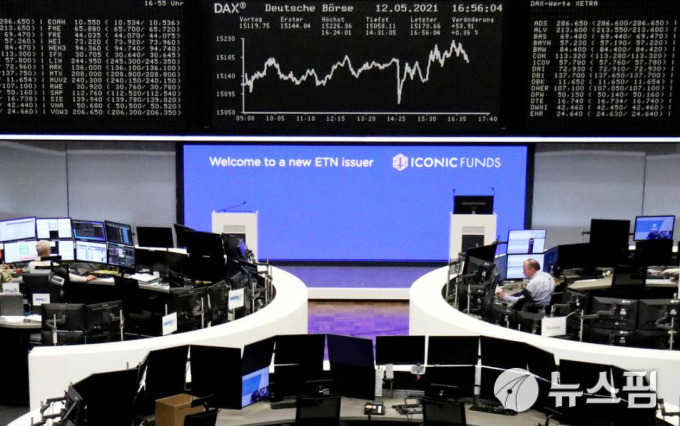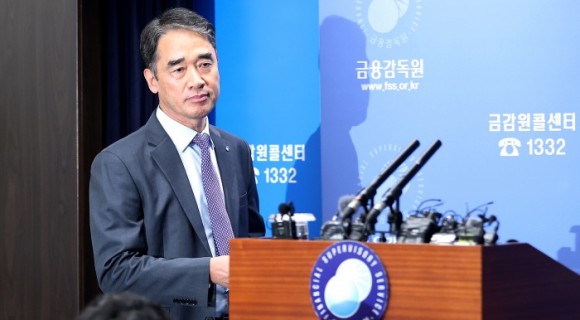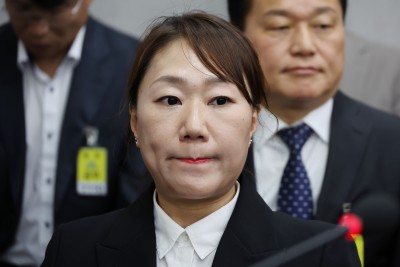Opening Speech by Masaaki Shirakawa, Governor of the Bank of Japan
At 2008 International Conference "Frontiers in Monetary Theory and Policy" hosted by the Institute for Monetary and Economic Studies, Bank of Japan, in Tokyo on May 28, 2008
May 28, 2008
Bank of Japan
Good morning. It is my great honor to address the Bank of Japan conference, hosted by the Institute for Monetary and Economic Studies. On behalf of my colleagues at the Bank of Japan, I welcome all the distinguished guests from central banks, international organizations, and academia.
The Role of Monetary Policy
When I took office as Governor of the Bank of Japan about two months ago, I read again Professor Milton Friedman's well-known presidential address, "The Role of Monetary Policy," given at the American Economic Association Annual Meeting in 1968, recalling my days as a student of Friedman's last class at the University of Chicago. In the address, he put the role of monetary policy this way.
The first and most important lesson that history teaches about what monetary policy can do--and it is a lesson of the most profound importance--is that monetary policy can prevent money itself from being a major source of economic disturbance... There is therefore a positive and important task for the monetary authority--to suggest improvements in the [monetary] machine that will reduce the chances that it will get out of order, and to use its own powers so as to keep the machine in good working order... A second thing monetary policy can do is [to] provide a stable background for the economy... Our economic system will work best when producers and consumers, employers and employees, can proceed with full confidence that the average level of prices will behave in a known way in the future--preferably that it will be highly stable.1
1See Friedman (1968).
What was intriguing here is that Friedman used the term monetary policy in a much broader context than we define now. Nowadays, the term monetary policy is used almost equivalent to "interest rate policy aiming at price stability." Monetary policy in this sense has been studied intensively and has been refined both in theory and in practice. Yet in his presidential address, Friedman pointed to the maintenance of well-functioning of financial markets and the system as the first role of monetary policy, and price stability as the second role. Of course, not much would be gained here by going deeply into the precision of these definitions, but these words and the terms of Professor Friedman seem to strike a chord with central bankers for two reasons. First, although the monetary policy in a conventional sense and financial system policy are usually considered as different policy prescriptions, they become related in a complicated and delicate manner in critical phases. Second, while policy instruments employed by a central bank essentially aim at providing or allocating liquidity, such instruments are not earmarked for each policy and its objective, namely, price stability or financial system stability. The distinction between these two policies is often not that clear.
Experience of the Bubble and Its Bursting
Such interrelation came to the fore during the bubble period Japan experienced since the latter half of the 1980s. As you are all aware, Japan's bubble was unprecedented in modern economic history: leverage expanded and asset prices rose sharply and vastly. In those circumstances, tangible investments took place that could only be justified as long as increases in asset prices would continue forever. Once the bubble burst, a massive amount of economically unworthy assets were left behind. In other words, asset markets failed in making efficient intertemporal allocation of resources, which per se became the source of economic turmoil.
The question of the relationship between monetary policy and the bubble is quite complex and the clear answer is yet to be provided. In that regard, many economic agents at that time had expectations that low interest rates would continue for a long time. I cannot convincingly say that had nothing to do with the bubble formation. Around 1988, those who argued for raising interest rates were a minority including academia or international organizations, given the extremely subdued inflation rate under the overheating economy. The annual growth rate of the consumer price index had been negative until March 1987 and the annual increase was only 0.7 percent in fiscal 1988 as a whole. Once the bubble burst, asset prices plunged and the capital of firms and financial institutions rapidly eroded, thereby inflicting severe damage on the entire economy. In particular, in Japan's financial system where banks played a predominant role in financial intermediations, the effects stemming from undercapitalization of the banking sector were extremely severe. During the initial periods after the burst of the bubble, adverse effects on the economy were brought about by a decline in demand from a high level and the negative wealth effect stemming from the plunge in asset prices. Subsequently, it became evident that the dominant channel was lower productivity stemming from the misallocation of resources, as a result of the malfunctioning of financial intermediation.
Currently, the United States and major European countries are experiencing financial turmoil in credit and funding markets. While there are some similarities between the current turmoil in the U.S. and Japan's experience during and after the bubble period, there are also various differences. Let me first point out the differences. First, the amount of losses seems to be quite different. The losses of Japanese deposit-taking institutions during the bubble period totaled some US$1 trillion. On the other hand, in the current financial turmoil, the IMF estimated the worldwide loss to be approximately US$945 billion, of which about half was incurred by banking sector, although these IMF estimates were based on various assumptions and thus warrant care in interpreting. Second, in the United States, the losses of securitized products, which triggered the recent turmoil, could be recognized through prices traded in the markets. In the case of Japan, however, the losses were concentrated on non-tradable loan assets that lacked marketability, and thus, together with drawbacks in accounting systems, led to a delay in recognizing the losses. Third, in the U.S., financial institutions that had suffered massive losses promptly raised capitals.
There are also similarities. Arguably, the bubble was formed, expanded, and burst. It is also common in both cases that a plunge in asset prices exerted adverse effects on the real economy through the deterioration of the financial side. Based on Japan's experience, how the negative feedback loop of tighter financial conditions, a decline in asset prices, and the deteriorating real economy will evolve could be key to the future course of the economy.
Challenges for Monetary Policy
The recent and current episodes of financial turmoil in the past twenty years show that central banks face various challenges in the context of monetary policy as broadly defined by Friedman.
The first challenge is how we should define and understand price stability which is an objective of monetary policy. Be it in Japan or in the U.S., many of recent bubbles occurred, quite paradoxically, following continued low interest rate period after price stability was achieved or deflation scare heightened. While how a decline in inflation or low interest rates relate to aggressive risk-taking by economic agents is yet to be clarified, the experience of the bubble and its burst tell us that the economy sometimes respond in a nonlinear manner. During such a nonlinear process, complicated dynamics such as the feedback loop between the real and financial side of the economy play a decisive role. In other words, the first and the second role of monetary policy as identified by Friedman are closely related to each other. While policymakers and economists understand that price stability represents a situation in which prices could remain stable in a medium to long term, inflation dynamics could evolve with a long lag and accompany nonlinear effects. Against such a backdrop, if we focus narrowly on the current observed inflation rate, there is a risk that necessary monetary policy adjustments might be delayed, inducing large fluctuations in economic activities. In that regard, central banks around the globe seem to strive for exploring optimal ways to communicate a quantitative expression of price stability with different consequences. Central banks under an inflation targeting regime announce the target level of inflation rate. The Bank of Japan and the European Central Bank (ECB) announce some kind of numerical definition of price stability, while the Federal Reserve provides a medium-term forecasted value of inflation given the current economic conditions and appropriate policy.
The second challenge is how to design financial system policy. Although we can recognize a risk of a nonlinear change of the economy such as the burst of the bubble, we cannot take preemptive monetary easing before a bubble burst. It is impossible to forecast precisely when the burst will take place. Once we recognize such a change, it is appropriate to cut the policy interest rate more than the standard Taylor rule suggests, as with the current policy by the Fed. At the same time, the Japanese experience shows that it is quite difficult to create sufficiently benign financial conditions only with a reduction in the policy interest rate when the balance sheets of firms and financial institutions are severely devastated. When looking at the current U.S. financial situation, the yields of corporate bonds with low credit standings have not been reduced yet compared with the level in summer 2007, despite the massive decrease in the policy rate. The fact suggests that in addition to the policy interest rate changes ex post, it is important to design a policy and institutional framework less prone to the formation of a bubble ex ante. While I have already mentioned possible measures in terms of monetary policy, how to align supervision and regulations remains an important challenge that needs to be addressed, so as not to let financial institutions' behaviors amplify economic fluctuations.
The third challenge is the so-called banking policy of central banks. For effective monetary policy, stable financial system and well-functioning financial markets are indispensable. The events since summer 2007 have highlighted that the loss of market liquidity has played a crucial role. Although the mechanism of drying up market liquidity has not yet been fully investigated, central banks have been making efforts to restore market liquidity by means of their own banking functions. In that regard, the Bank of Japan has shown itself to be at the frontiers. For example, in 2001 it introduced a new method of liquidity provision with relatively longer maturities to a wider range of financial institutions. This is equivalent to the Term Auction Facility (TAF) introduced by the Fed in December 2007. In 2001, the Bank of Japan introduced a standing facility to financial institutions including securities companies.2 It corresponds to the Primary Dealer Credit Facility (PDCF) introduced by the Fed in March 2008. In addition, the Bank of Japan carried out a twist operation--a mixture of liquidity provision and issuance of bills sold, where a central bank acts as a kind of broker in the money market. Furthermore, it purchased asset-backed securities, and purchased stocks held by banks. All those measures were policy prescriptions aimed at revitalizing the functioning of financial markets and financial system. Although they would not usually be classified as monetary policy measures, the effects of monetary policy cannot be evaluated without considering the banking policy conducted by a central bank. In the changing financial environment, central banks are bound to continuously review their operations.
2As for the actions taken in 2001, see Bank of Japan, Open Market Operations Division (2001,2002).
Concluding Remarks
The challenges I have described are very practical for central banks. While they are all quite difficult ones for central banks to tackle, central banks should conduct their policy by finding the answers to them one by one. In such a process, central banks make the most of available academic wisdom. Central banks often face situations unexplained by existing theories. For that very reason, I believe that central banks must be ever learning institutions. At the same time, we should make efforts to convey to academia whatever puzzles we have found in practice. In turn, the theories developed in academic circles would find their way to be fed back to central bank circles as valuable input for the proper conduct of monetary policy.
I am convinced that candid and inspiring discussions in various aspects of monetary policy will take place at this conference, that the discussions will be applied to the future policy implementation among central banks, and that the nexus between practice and theory will push back the academic frontiers furthermore.
Thank you for your attention, and I wish you a big success of the conference.
--------------------------------------------------------------------------------
References
Bank of Japan, Open Market Operations Division, "Money Market Operations in FY2000," Market Review, 01-E-4, 2001.
---, ---, "Money Market Operations in FY2001," Market Review, 02-E-3, 2002.
Friedman, Milton, "The Role of Monetary Policy," American Economic Review, 58 (1), 1968, pp. 1-17.
At 2008 International Conference "Frontiers in Monetary Theory and Policy" hosted by the Institute for Monetary and Economic Studies, Bank of Japan, in Tokyo on May 28, 2008
May 28, 2008
Bank of Japan
Good morning. It is my great honor to address the Bank of Japan conference, hosted by the Institute for Monetary and Economic Studies. On behalf of my colleagues at the Bank of Japan, I welcome all the distinguished guests from central banks, international organizations, and academia.
The Role of Monetary Policy
When I took office as Governor of the Bank of Japan about two months ago, I read again Professor Milton Friedman's well-known presidential address, "The Role of Monetary Policy," given at the American Economic Association Annual Meeting in 1968, recalling my days as a student of Friedman's last class at the University of Chicago. In the address, he put the role of monetary policy this way.
The first and most important lesson that history teaches about what monetary policy can do--and it is a lesson of the most profound importance--is that monetary policy can prevent money itself from being a major source of economic disturbance... There is therefore a positive and important task for the monetary authority--to suggest improvements in the [monetary] machine that will reduce the chances that it will get out of order, and to use its own powers so as to keep the machine in good working order... A second thing monetary policy can do is [to] provide a stable background for the economy... Our economic system will work best when producers and consumers, employers and employees, can proceed with full confidence that the average level of prices will behave in a known way in the future--preferably that it will be highly stable.1
1See Friedman (1968).
What was intriguing here is that Friedman used the term monetary policy in a much broader context than we define now. Nowadays, the term monetary policy is used almost equivalent to "interest rate policy aiming at price stability." Monetary policy in this sense has been studied intensively and has been refined both in theory and in practice. Yet in his presidential address, Friedman pointed to the maintenance of well-functioning of financial markets and the system as the first role of monetary policy, and price stability as the second role. Of course, not much would be gained here by going deeply into the precision of these definitions, but these words and the terms of Professor Friedman seem to strike a chord with central bankers for two reasons. First, although the monetary policy in a conventional sense and financial system policy are usually considered as different policy prescriptions, they become related in a complicated and delicate manner in critical phases. Second, while policy instruments employed by a central bank essentially aim at providing or allocating liquidity, such instruments are not earmarked for each policy and its objective, namely, price stability or financial system stability. The distinction between these two policies is often not that clear.
Experience of the Bubble and Its Bursting
Such interrelation came to the fore during the bubble period Japan experienced since the latter half of the 1980s. As you are all aware, Japan's bubble was unprecedented in modern economic history: leverage expanded and asset prices rose sharply and vastly. In those circumstances, tangible investments took place that could only be justified as long as increases in asset prices would continue forever. Once the bubble burst, a massive amount of economically unworthy assets were left behind. In other words, asset markets failed in making efficient intertemporal allocation of resources, which per se became the source of economic turmoil.
The question of the relationship between monetary policy and the bubble is quite complex and the clear answer is yet to be provided. In that regard, many economic agents at that time had expectations that low interest rates would continue for a long time. I cannot convincingly say that had nothing to do with the bubble formation. Around 1988, those who argued for raising interest rates were a minority including academia or international organizations, given the extremely subdued inflation rate under the overheating economy. The annual growth rate of the consumer price index had been negative until March 1987 and the annual increase was only 0.7 percent in fiscal 1988 as a whole. Once the bubble burst, asset prices plunged and the capital of firms and financial institutions rapidly eroded, thereby inflicting severe damage on the entire economy. In particular, in Japan's financial system where banks played a predominant role in financial intermediations, the effects stemming from undercapitalization of the banking sector were extremely severe. During the initial periods after the burst of the bubble, adverse effects on the economy were brought about by a decline in demand from a high level and the negative wealth effect stemming from the plunge in asset prices. Subsequently, it became evident that the dominant channel was lower productivity stemming from the misallocation of resources, as a result of the malfunctioning of financial intermediation.
Currently, the United States and major European countries are experiencing financial turmoil in credit and funding markets. While there are some similarities between the current turmoil in the U.S. and Japan's experience during and after the bubble period, there are also various differences. Let me first point out the differences. First, the amount of losses seems to be quite different. The losses of Japanese deposit-taking institutions during the bubble period totaled some US$1 trillion. On the other hand, in the current financial turmoil, the IMF estimated the worldwide loss to be approximately US$945 billion, of which about half was incurred by banking sector, although these IMF estimates were based on various assumptions and thus warrant care in interpreting. Second, in the United States, the losses of securitized products, which triggered the recent turmoil, could be recognized through prices traded in the markets. In the case of Japan, however, the losses were concentrated on non-tradable loan assets that lacked marketability, and thus, together with drawbacks in accounting systems, led to a delay in recognizing the losses. Third, in the U.S., financial institutions that had suffered massive losses promptly raised capitals.
There are also similarities. Arguably, the bubble was formed, expanded, and burst. It is also common in both cases that a plunge in asset prices exerted adverse effects on the real economy through the deterioration of the financial side. Based on Japan's experience, how the negative feedback loop of tighter financial conditions, a decline in asset prices, and the deteriorating real economy will evolve could be key to the future course of the economy.
Challenges for Monetary Policy
The recent and current episodes of financial turmoil in the past twenty years show that central banks face various challenges in the context of monetary policy as broadly defined by Friedman.
The first challenge is how we should define and understand price stability which is an objective of monetary policy. Be it in Japan or in the U.S., many of recent bubbles occurred, quite paradoxically, following continued low interest rate period after price stability was achieved or deflation scare heightened. While how a decline in inflation or low interest rates relate to aggressive risk-taking by economic agents is yet to be clarified, the experience of the bubble and its burst tell us that the economy sometimes respond in a nonlinear manner. During such a nonlinear process, complicated dynamics such as the feedback loop between the real and financial side of the economy play a decisive role. In other words, the first and the second role of monetary policy as identified by Friedman are closely related to each other. While policymakers and economists understand that price stability represents a situation in which prices could remain stable in a medium to long term, inflation dynamics could evolve with a long lag and accompany nonlinear effects. Against such a backdrop, if we focus narrowly on the current observed inflation rate, there is a risk that necessary monetary policy adjustments might be delayed, inducing large fluctuations in economic activities. In that regard, central banks around the globe seem to strive for exploring optimal ways to communicate a quantitative expression of price stability with different consequences. Central banks under an inflation targeting regime announce the target level of inflation rate. The Bank of Japan and the European Central Bank (ECB) announce some kind of numerical definition of price stability, while the Federal Reserve provides a medium-term forecasted value of inflation given the current economic conditions and appropriate policy.
The second challenge is how to design financial system policy. Although we can recognize a risk of a nonlinear change of the economy such as the burst of the bubble, we cannot take preemptive monetary easing before a bubble burst. It is impossible to forecast precisely when the burst will take place. Once we recognize such a change, it is appropriate to cut the policy interest rate more than the standard Taylor rule suggests, as with the current policy by the Fed. At the same time, the Japanese experience shows that it is quite difficult to create sufficiently benign financial conditions only with a reduction in the policy interest rate when the balance sheets of firms and financial institutions are severely devastated. When looking at the current U.S. financial situation, the yields of corporate bonds with low credit standings have not been reduced yet compared with the level in summer 2007, despite the massive decrease in the policy rate. The fact suggests that in addition to the policy interest rate changes ex post, it is important to design a policy and institutional framework less prone to the formation of a bubble ex ante. While I have already mentioned possible measures in terms of monetary policy, how to align supervision and regulations remains an important challenge that needs to be addressed, so as not to let financial institutions' behaviors amplify economic fluctuations.
The third challenge is the so-called banking policy of central banks. For effective monetary policy, stable financial system and well-functioning financial markets are indispensable. The events since summer 2007 have highlighted that the loss of market liquidity has played a crucial role. Although the mechanism of drying up market liquidity has not yet been fully investigated, central banks have been making efforts to restore market liquidity by means of their own banking functions. In that regard, the Bank of Japan has shown itself to be at the frontiers. For example, in 2001 it introduced a new method of liquidity provision with relatively longer maturities to a wider range of financial institutions. This is equivalent to the Term Auction Facility (TAF) introduced by the Fed in December 2007. In 2001, the Bank of Japan introduced a standing facility to financial institutions including securities companies.2 It corresponds to the Primary Dealer Credit Facility (PDCF) introduced by the Fed in March 2008. In addition, the Bank of Japan carried out a twist operation--a mixture of liquidity provision and issuance of bills sold, where a central bank acts as a kind of broker in the money market. Furthermore, it purchased asset-backed securities, and purchased stocks held by banks. All those measures were policy prescriptions aimed at revitalizing the functioning of financial markets and financial system. Although they would not usually be classified as monetary policy measures, the effects of monetary policy cannot be evaluated without considering the banking policy conducted by a central bank. In the changing financial environment, central banks are bound to continuously review their operations.
2As for the actions taken in 2001, see Bank of Japan, Open Market Operations Division (2001,2002).
Concluding Remarks
The challenges I have described are very practical for central banks. While they are all quite difficult ones for central banks to tackle, central banks should conduct their policy by finding the answers to them one by one. In such a process, central banks make the most of available academic wisdom. Central banks often face situations unexplained by existing theories. For that very reason, I believe that central banks must be ever learning institutions. At the same time, we should make efforts to convey to academia whatever puzzles we have found in practice. In turn, the theories developed in academic circles would find their way to be fed back to central bank circles as valuable input for the proper conduct of monetary policy.
I am convinced that candid and inspiring discussions in various aspects of monetary policy will take place at this conference, that the discussions will be applied to the future policy implementation among central banks, and that the nexus between practice and theory will push back the academic frontiers furthermore.
Thank you for your attention, and I wish you a big success of the conference.
--------------------------------------------------------------------------------
References
Bank of Japan, Open Market Operations Division, "Money Market Operations in FY2000," Market Review, 01-E-4, 2001.
---, ---, "Money Market Operations in FY2001," Market Review, 02-E-3, 2002.
Friedman, Milton, "The Role of Monetary Policy," American Economic Review, 58 (1), 1968, pp. 1-17.
 영상
영상






















